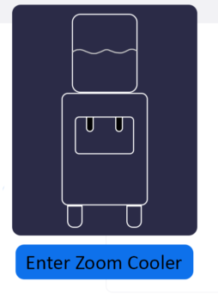Project 1

Discerning and Using Your Own Values to Create Human-Centered Design

PROBLEM:
Social distancing is a new reality that challenges how we communicate. With mandates in place that order restrictions on physical interactions, we must use different methods of communication to collaborate medically, legally, academically, professionally, and personally; ergo, video teleconferencing. Zoom is a video teleconferencing provider, in a sense a social system of a transitory nature wherein which we chat and observe, and to a limited extent interact. But the means to interact are limited on Zoom. We can chat and message and share information, but interaction is more than this, it is as Kenneth P. Wilkinson writes in the article, “The Community As a Social Field”, “something other than the behaviors of men; a process of interaction is something other than the sum of interactions that compose it.” (Source) As I see it, that something other is a set of values, values that we can share with others, that others may share with us for the greater purpose of understanding. As much as Zoom claims “togetherness”, the wherewithal for understanding is not there.
CONTEXT:
Zoom is a great classroom tool, with a click I can enter a session whether it be on computer of phone; I can chat; enter breakout rooms; and share content. I can mute, unmute, show my face or not, and see the faces of others. On one level there is ample sharing, but on another level, there is a certain level of sterility that is not easy to overcome and does not foster acquaintanceship or engagement based upon shared interests. The Zoom meeting is over and we part ways; it is outcome focused rather than process focused. In Journal 3 of NMD 200, I discuss a focus on process, rather than outcome, as a way to breathe deeply, as another way to approach design, as another way to understand and engage with my community. I suggest that painting on small surfaces without regard to content will help with process. Zoom Cooler is also a focus on process, the process of understanding. With Zoom as it stands there is no going out for a cup of coffee to discuss the merits of class, there is no stroll to the water fountain to hear the thoughts of a colleague or professor; albeit, it is within these small moments that our guards are down, we focus on the process of exchange which more likely than not allows for emotion. Don Norman, author of “Emotional Design” (Norman, Donald A. Emotional Design: Why We Love (or Hate) Everyday Things. Basic Books, 2004) succinctly argues, “ that emotion is a necessary part of life, affecting how you feel, how you behave, and how you think…emotion makes you smart.” Emotion helps with understanding.
TECH:
I propose a new change in design feature for Zoom, The Zoom Cooler, in which participants inside of a class or organization may “gather” informally to get to know one another, exchange ideas, and understand. This change would appear on the Zoom Home Page in the menu bar as “Zoom Cooler”. Such that when a person opens this product they are able to engage with other people within the session held but outside of that session. The video and audio component would allow for people to navigate around a water cooler to engage and network.
PROS:
- Increase connection through informal sharing
- Innovation
- Natural organic flow of Ideas
- Reflective
- Effective
CONS:
- Gossip vs. Knowledge
- Disorganization
- Flippant Ideas with no coherence
- Dismissive
- Costly

VALUES:
Under supported positive human values that I wish to promote are understanding, as understanding leads to empathy which leads to a sincere sense of cooperation within community and culture, important for all. While design for end use is paramount, so is human dignity and human rights. Richard Buchanan asserts in the article “Human Dignity and Human Rights: Thoughts on the Principles of Human-Centered” that “Human-centered design is fundamentally an affirmation of human dignity. It is an ongoing search for what can be done to support and strengthen the dignity of human beings as they act out their lives in varied social, economic, political, and cultural circumstances.” (Source)

REDESIGN:
Metaphorically, a water cooler is an informal place were knowledge, frank discussion, secrets and gossip, and ideas are exchanged. The key is the informality of discussion that leads to trajectories and tangents not always associated with the logic of professional or academic formality. The process of redesign was guided by the Center for Humane Technology Design Guide ( Source) I focused on the question, “How might your product/feature support or elevate human sensitivities?” Human sensitivities as defined by The Center for Humane Design are “instincts that are vulnerable to new technologies.” Zoom is invaluable when it comes to synchronous video teleconferencing, but as of the moment lacks the means for creating understanding. Zoom Cooler, a dynamic of sharing, will enhance the human sensitivities of the “sensemaking” as it will provide support for an individual to “consider, learn, express and feel grounded”; and, “group dynamics” as this will support “ a sense of belonging and cooperation.” (Source) The trajectories and tangents that will form as a result of the Zoom Cooler dynamic might become active stories that increase mutual learning, understanding, and co-design.

You must be logged in to post a comment.